|
Displaying items by tag: solomon r. guggenheim museum
The Brooklyn Museum has announced the appointment of Nancy Spector as its deputy director and chief curator. Spector joins the museum after having served for more than 29 years at the Solomon R. Guggenheim Museum in New York. She comes to the Brooklyn Museum as the first senior staff member hired by Anne Pasternak following her recent appointment as the Museum's Shelby White and Leon Levy director.
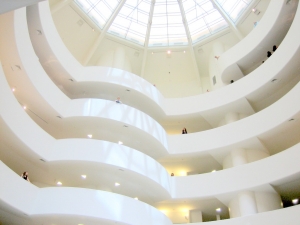
The United States has honored Frank Lloyd Wright -- widely considered the father of modern architecture -- by nominating ten of his buildings for inclusion on the UNESCO World Heritage List. This is the first time that the U.S. has included works of modern architecture on its ballot and the first time that it has nominated a new site since 2013.
According to UNESCO, to be included on the World Heritage List, a site must be of outstanding universal value and meet at least one out of the ten selection criteria, which includes “representing a masterpiece of human creative genius” and “serving as an outstanding example of a type of architectural building, which illustrates a significant stage in human history.” If added to the World Heritage List, the buildings would join the ranks of such iconic modern structures as the innovative Sydney Opera House by Danish architect Jørn Utzon and Spanish Catalan architect Antoni Gaudi’s sculptural works in Barcelona, including Parque Güel and Crypt of La Sagrada Familia.
The Walker Art Center, which is 75 years old this year, has acquired around 4,000 objects amassed by the late Chinese-American artist Martin Wong. The artist Danh Vo turned the hoard into an installation, "I M U U R 2," for a solo show at New York’s Solomon R. Guggenheim Museum in 2013 after winning its Hugo Boss Prize.
When the Walker bought the piece last September, it fulfilled Vo’s hope that the trove would enter a museum. The Danish-Vietnamese artist made the work from the bric-a-brac that Wong had collected over four decades: Chinese teaware, calligraphy, Disney figurines, and assorted Americana alongside Wong’s own paintings.
On Sunday, November 2, the Gulf Emirate of Abu Dhabi offered visitors a sneak peek of several artworks to be displayed at its forthcoming Guggenheim museum. Nineteen of the two-hundred artworks acquired by Abu Dhabi will remain on public display from Wednesday, November 5, through January 2015.
The exhibition “Seeing through Light: Selections from the Guggenheim Abu Dhabi” presents artworks specifically acquired for Guggenheim Abu Dhabi as well as two key loans from its partner institution, the Solomon R. Guggenheim Museum in New York.
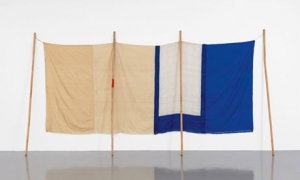
The Robert Rauschenberg Foundation announced that six American museums have acquired works by Robert Rauschenberg thank to its Gift/Purchase Program. The program was designed to expand public access to and awareness of Rauschenberg’s work by offering institutions the opportunity to acquire artworks from the foundation’s collection through equal parts gift and purchase.
The Metropolitan Museum of Art in New York acquired “Bande de Surete/Twin City/Nipples (Cardboard)” and “Vow (Jammers);” The Minneapolis Institute of Arts in Minnesota gained “Park/ROCI MEXICO;” the Museum of Modern Art in New York obtained “Nabisco Shredded Wheat (Cardboard),” “Gull (Jammer),” and “Stop Side Early Winter (Glut);” The New Orleans Museum of Art in Louisiana acquired “Melic Meeting (Spread);” The San Francisco Museum of Modern Art in California gained “Rosalie/Red Cheek/Temporary Letter/Stock (Cardboard);” and the Solomon R. Guggenheim Museum in New York obtained “Untitled (Venetian).”
The works, which were created across two decades, are from some of Rauschenberg’s most important series. His Cardboards explore the aesthetic potential of everyday materials; the Venetians are sculptural works reminiscent of the Italian city’s atmosphere; Jammers, which were inspired by a trip to India, celebrate the sensual qualities of fabric; Spreads are large-scale works that combine printed imagery and found objects; Gluts touch on socioeconomic issues; and the artist’s ROCI series was created as part of a humanitarian project that promoted world peace through artistic dialogue with local cultures.
Rauschenberg, who helped bridge the gap between Abstract Expressionism and Pop art, was a pioneering figure in 20th century art. He is best known for his “Combines,” which are part painting and part sculpture. Rauschenberg often used found objects and non-traditional materials in these works.
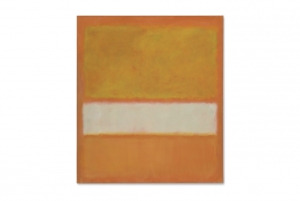
On November 12, 2013, Christie’s New York will offer a monumental abstract painting by Mark Rothko during its Post-War and Contemporary Art Evening sale. The last time a Rothko of this magnitude was offered at auction was May 2012 when Orange, Red, Yellow sold for a record $86.6 million at Christie’s.
Untitled (No. 11) has resided in the same collection for two decades. Prior to its acquisition in 1992, the work was featured in a number of retrospectives including exhibitions at the Contemporary Arts Museum in Houston, the Neue National-Galerie in Dusseldorf, and the Solomon R. Guggenheim Museum in New York. Untitled (No. 11) is expected to garner between $25 million and $35 million.
Brett Gorvy, Chairman and International Head of Post-War & Contemporary Art at Christie’s, said, “After the auction record set in May 2012 for Orange, Red, Yellow, from the Pincus Collection, we are delighted to present Untitled (No. 11) as one of the highlights of Christie’s November evening sale. The demand for masterworks by Rothko is probably the most international amongst all the artists we sell, with strong bidding consistently from the Americas, Europe, Asia, Russia and the Middle-East. Untitled (No. 11) is remarkable for its incredible beauty, intensity of color and inner light - the very hallmarks of Rothko’s prime period. The monumental scale allows viewers to be completely enveloped by the colors and its sensations.”
Untitled (No. 11) will go on view in London before traveling to New York in November.
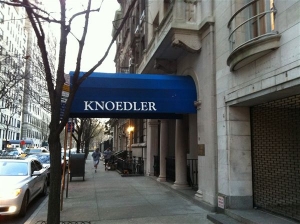
Ann Freedman, former president of the disgraced gallery Knoedler & Co., filed a defamation suit on Wednesday, September 11 in New York State Supreme Court. Freedman helmed the historic gallery until it closed in 2011 amidst charges that it had sold forged artworks worth nearly $80 million.
In her case, Freedman declared that she did due diligence in researching a collection that was presented to her and listed nearly 20 experts, including curators from the Museum of Modern Art, the National Gallery of Art and the Solomon R. Guggenheim Museum, that told her that the works were authentic. However, in many of these cases, the comments were unofficial and decidedly vague.
Freedman’s case is aimed at Manhattan art dealer Marco Grassi who was quoted in a New York magazine as saying “A gallery person has an absolute responsibility to do due diligence, and I don’t think she did it. The story of the paintings is so totally kooky. I mean, really. It was a great story and she just said, ‘this is great.’”
Long Island-based art dealer Glafira Rosales and her boyfriend are allegedly responsible for selling the 60 forgeries to Knoedler & Co. The couple claimed that the works were authentic masterpieces by artists such as Jackson Pollock, Willem de Kooning and Mark Rothko. It was recently discovered that they were painted by an artist in his home studio in Queens.
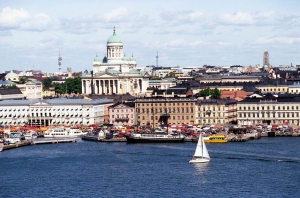
Helsinki, Finland is expecting a second proposal for a Guggenheim museum after rejecting the first offer due to its high cost. Plans for a Guggenheim franchise in the Finnish capital were vetoed by the Helsinki city council in May of last year, despite having the support of the city’s mayor Jussi Pajunen. The original proposal speculated that the project would cost around $186 million to complete.
Helsinki’s deputy mayor Rita Viljanen told AFP that executives of the Solomon R. Guggenheim Foundation in New York have been talking with several Finnish representatives. Together with the foundation’s director, Richard Armstrong, they are trying to determine a way to improve the project plan while keeping costs down. A new proposal is expected to be submitted to the city by September 2013.
The Guggenheim’s proposition has been met with some opposition from The Greens, Finland’s Social Democratic Party, the Left Alliance and the populist Finns Party. Dissenters feel that the Guggenheim’s endeavor is motivated more by tourism than a true interest in the development of contemporary art in Finland.
The Guggenheim currently has museums in New York, Bilbao, Berlin, Venice, and another is under construction in Abu Dhabi.
This August and September, the Solomon R. Guggenheim Museum in New York will offer members an exclusive look at James Turrell’s major site-specific work Aten Reign. The popular installation will be showcased in Quiet Views, allowing visitors the chance to experience the luminous and immersive work in an intimate and meditative environment.
James Turrell, an American artist who is best known for his works that explore light and space, spent nearly six years planning the massive installation that has transformed the Guggenheim’s iconic Frank Lloyd Wright-designed rotunda. Quiet Views consists of four events taking place on the evenings of August 12, August 19, September 9, and September 23 and will include two sittings on each day. Only sixty people will be present at each hour-long sitting.
James Turrell was organized by the Guggenheim in collaboration with the Los Angeles County Museum of Art and the Museum of Fine Arts, Houston.
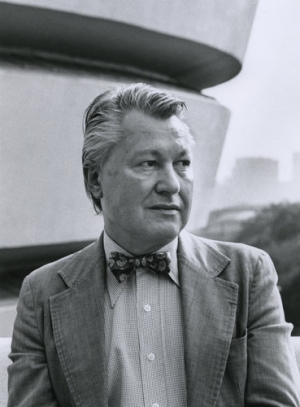
Thomas M. Messer, the longtime director of the Solomon R. Guggenheim Museum in New York, passed away on Wednesday, May 15, 2013 at his home in Manhattan. Messer served as the institution’s director from 1961 to 1988 when he retired. Messer also served as the director of the Guggenheim Foundation, which is dedicated to promoting the understanding and appreciation of art, from 1980 to 1988.
During his time at the Guggenheim, Messer helped to establish the museum as of one of the finest art institutions in the world. In doing so, he grew its collection, increased its exhibitions program, improved its publications, and helped it to become a global entity.
Messer vastly expanded the Guggenheim’s holdings by acquiring two major private collections. In 1963, Justin K. Thanhauser, the son of a German art dealer, gave the museum a trove of Impressionist, Post-Impressionist, and early modern works including over 30 Picassos. The second bequest came from Peggy Guggenheim who left her entire collection including an array of Cubist, Surrealist, and Abstract Expressionist works to the Guggenheim Foundation. The collection operates as a museum known as the Peggy Guggenheim Collection.
Born in Eastern Europe in 1920, Messer arrived in the United States in 1939. He graduated from Boston University in 1942, joined the army, and served as an interrogator for military intelligence in Europe. After the war, he stayed in Europe and studied art at the Sorbonne. Upon his return back to the United States, Messer was named director of a small museum in New Mexico. He eventually earned a master’s degree in art history from Harvard and was soon appointed director of the Institute of Contemporary Art in Boston.
While he has no surviving family, Messer leaves behind a legacy of diplomatic leadership as well as one of the finest art institutions in the world.
|
|
|
|
|